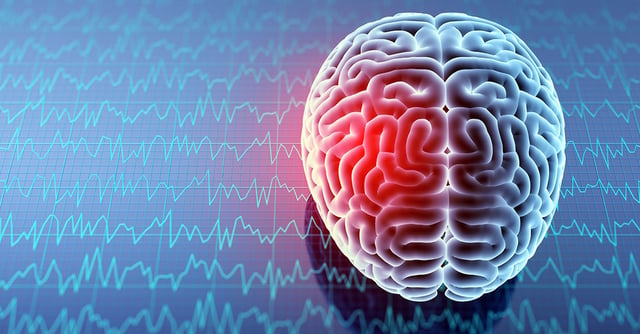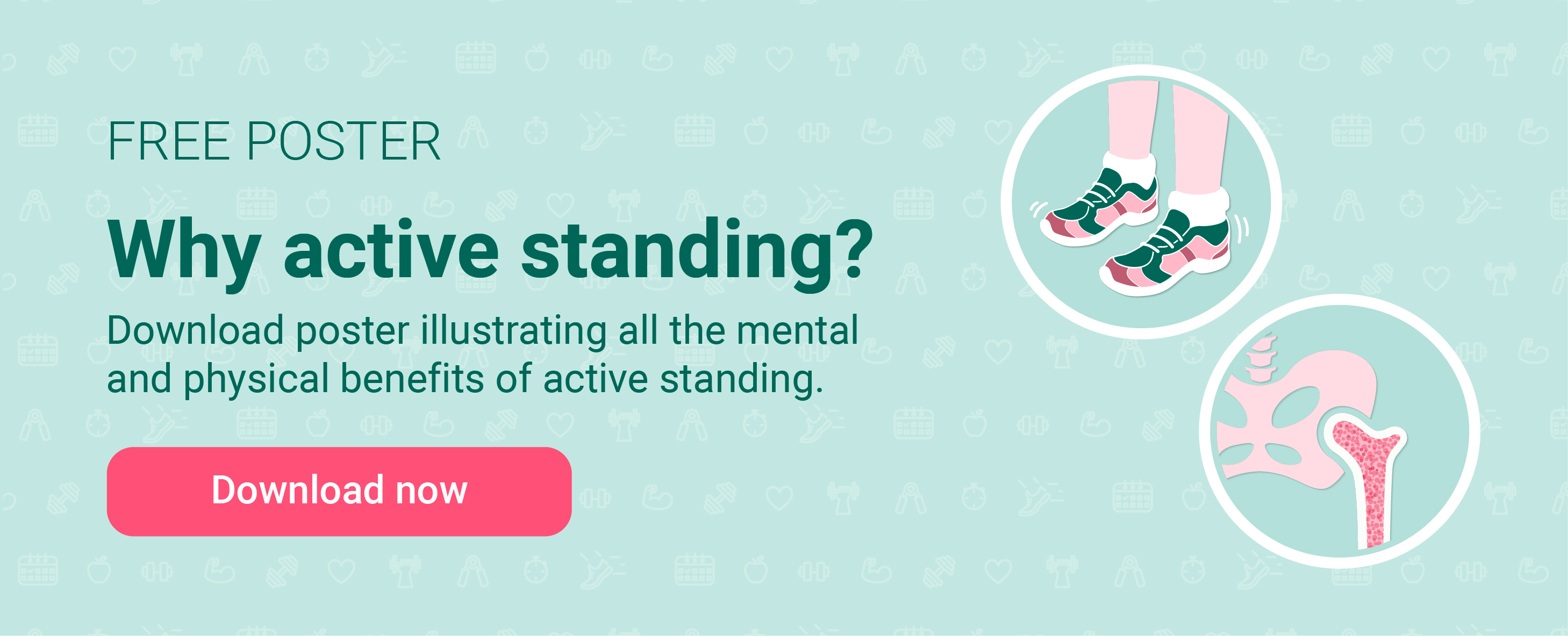
Feb 5, 2021New published study: Innowalk Pro intervention after acquired brain injury

Back to Blog Overview
A study conducted at Sunnaas Rehabilitation Hospital in Norway, published in a peer reviewed journal, concluded that the Innowalk Pro was a feasible and motivational intervention for a patient with severe brain injury.
The single-subject experimental study showed that:
- The Innowalk Pro, which is a motorized rehabilitation trainer, was found to be a feasible and motivating intervention for a patient with severe brain injury.
- Heart rate decreased during the training in the Innowalk Pro
- Blood pressure remained stable during the Innowalk Pro training
- Leg movements in the Innowalk Pro may contribute to improvements in trunk control.
Introduction
Until recently the main intervention for mobilisation after acquired brain injury has been the use of tilt tables, in-bed cycling and manual mobilisation by manpower. New, innovative technology is now on the market, and a more dynamic type of standing is available, also for patients with acquired brain injury.
Sunnaas Rehabilitation Hospital in Norway is the largest specialist hospital in the country within the field of physical medicine and rehabilitation. The hospital provides multidisciplinary rehabilitation for patients with complex functional impairment following illness or injury.
Sunnaas’ department for traumatic brain injury has since 2014 been involved in a research and development project together with Made for Movement. The aim of the project has been to test the Innowalk Pro, which is a robotic rehabilitation trainer allowing patients with severe disabilities to stand and move. They have been testing the device on patients with head injuries, with the purpose of:
- Conducting a feasibility study on early mobilisation of patients with acquired brain injury.
- Contributing to the development of a product, adapted to adult patients.
Sunnaas’ contribution has resulted in an Innowalk Pro version more appropriately adapted to the adult marked.
Read more: Get to know more about this product here.
At the end 2020, researchers from the Sunnaas hospital published an article in the peer reviewed journal “Disability and rehabilitation: Assistive technology” featuring work on the Innowalk Pro.
To give you a brief overview of this single-subject experimental design study, here’s an article summary:
Aim of the study
Sunnaas hospital offers treatment to a variety of patients, and among these, patients with severe brain injuries in a stable subacute phase. The aim of the study was to explore the feasibility, physical and physiological responses of patients training in the motorised rehabilitation trainer Innowalk Pro.
Material and methods
The study was conducted as a single-subject experimental design, including a 40- year-old female with an acquired brain injury. The design of the study was an A1-B-A2 model. Phase A1 was baseline (3 weeks) including treatment as usual, including standing in a standing frame. The B phase was the intervention period, where the Innowalk Pro training was applied. This phase lasted for 6 weeks. In the A2 phase the Innowalk Pro was withdrawn and treatment followed the standard procedure as in A1 (3 weeks).
Feasibility outcome measures was conducted by the patient’s impression from each training session on a five-level Likert scale (1=very bad, 5= very good).
In addition, a questionnaire was conducted by the healthcare workers on the feasibility of the Innowalk Pro, also on a Likert scale (1= extremely low, 5=very high).
Questions were related to:
- placing the patients in the device,
- resources, and
- experience of the suitability of the device in this type of patients.
Adverse events were also registered throughout the study period.
The following physical outcome measures were conducted weekly during phase A1 and A2, and once every second week in phase B:
- Trunk control with Modified Trunk Impairment Scale
- Muscle tone with Modified Ashworth Scale (MAS)
- Passive range of motion with Lidcombe Template
Physiological measures were conducted during each session:
- Heart rate (HR)
- Blood pressure (BP)
- Walking distance, cadence, and time
Patient characteristics
- 40-year-old-female
- Severe brain injury after a subarachnoid haemorrhage
- 93 days post-injury transferred to rehabilitation hospital
- Medical stable – posttraumatic confusion state
- Tetraplegic incl. decreased seating balance and control of neck and trunk
- Increased muscle tone in four limbs and trunk
- Decreased dorsiflexion in the ankles
- Non-verbal
Results
Feasibility
The training in the intervention phase with the Innowalk Pro was by the patient. perceived as more physically exhausting than training in the static standing frame.
Nevertheless, the patient preferred the Innowalk Pro training over standing frame. This motivation might be related to variation in training and resembling walking movements. The patient in the study used to train in a gym prior to the injury and the Innowalk Pro might have reminded her of a familiar elliptical training.
Physical outcomes
According to the Trunk Impairment Scale (TIS) there were no changes between baseline and the intervention phase, even observations indicated improvements. Previous studies on TIS indicate that this tool might not be sensitive enough to catch changes on patients with severely impaired trunk control.
Muscle tone in the ankles was reduced in the intervention phase and maintained throughout A2 phase, and a small increase in the passive range of ankle dorsiflexion was also measured during the whole study period.
The staff observed positive improvements on the patient’s physical and cognitive function through the whole period. Higher doses of exercise were tolerated, and the need of support in daily activities, such as transfer, was reduced.
At the end of phase A2 the patient was able to stand up and walk overground with the assistance of one therapist and a walking frame.
Heart rate
A non-significant decrease in heart rate (HR) was measured during the intervention phase, which was surprising as the patient’s subjective experience suggested that the training in the Innowalk Pro was more demanding. The authors discussed that this reduced HR might be explained by recommended treatment with antihypertensive medication, to keep the BP and the HR at low level. This to prevent secondary vascular complications.
Blood pressure
The blood pressure showed a flat trend line, and it doesn’t seem like the training in the Innowalk Pro influenced the mean arterial blood pressure much.
Training duration
The training duration dropped when the patient was moving from a standing frame to the Innowalk Pro. This can be related to both adaptation to a new type of training and the fact that the patient was readmitted to the acute hospital first week of the intervention phase. Overall, the duration increased gradually during the intervention phase. Walking distance during phase B increased from 176 m in the first week to 372 m in the last week.
Conclusion
The study showed that early mobilisation with the use of the Innowalk Pro was a feasible and motivating intervention for a patient with severe brain injury. The researcher implicates that the movements of the legs that is achieve in the device might have contributed to improvements in trunk control. Heart rate decreased during the Innowalk Pro training, while blood pressure remained stable.
The article «Early mobilization of a patient with acquired brain injury using a new standing aid, the Innowalk Pro. A single-subject experimental design» published in the Disability and Rehabilitation: Assistive Technology can be found here.
A new study was initiated at Sunnaas hospital in 2020. This study aims to measure acute physical and physiological responses to standing in the Innowalk Pro compared to standard standing treatment in patients with severe functional outcomes due to stroke or traumatic brain injury. The study is a randomized prospective cross-over pilot study, including 25 patients. For more information see ClinicalTrial.gov.

Rikke Damkjær Moen brings many years of experience as clinical physiotherapist to the Made for Movement team. Her mission is to ensure that everybody, regardless of mobility problems, should be able to experience the joy and health benefits of physical activity. As our Medical Manager, Rikke is passionate about sharing knowledge so that individuals with special needs, families, and clinicians can discover the possibilities and solutions provided by Made for Movement.


